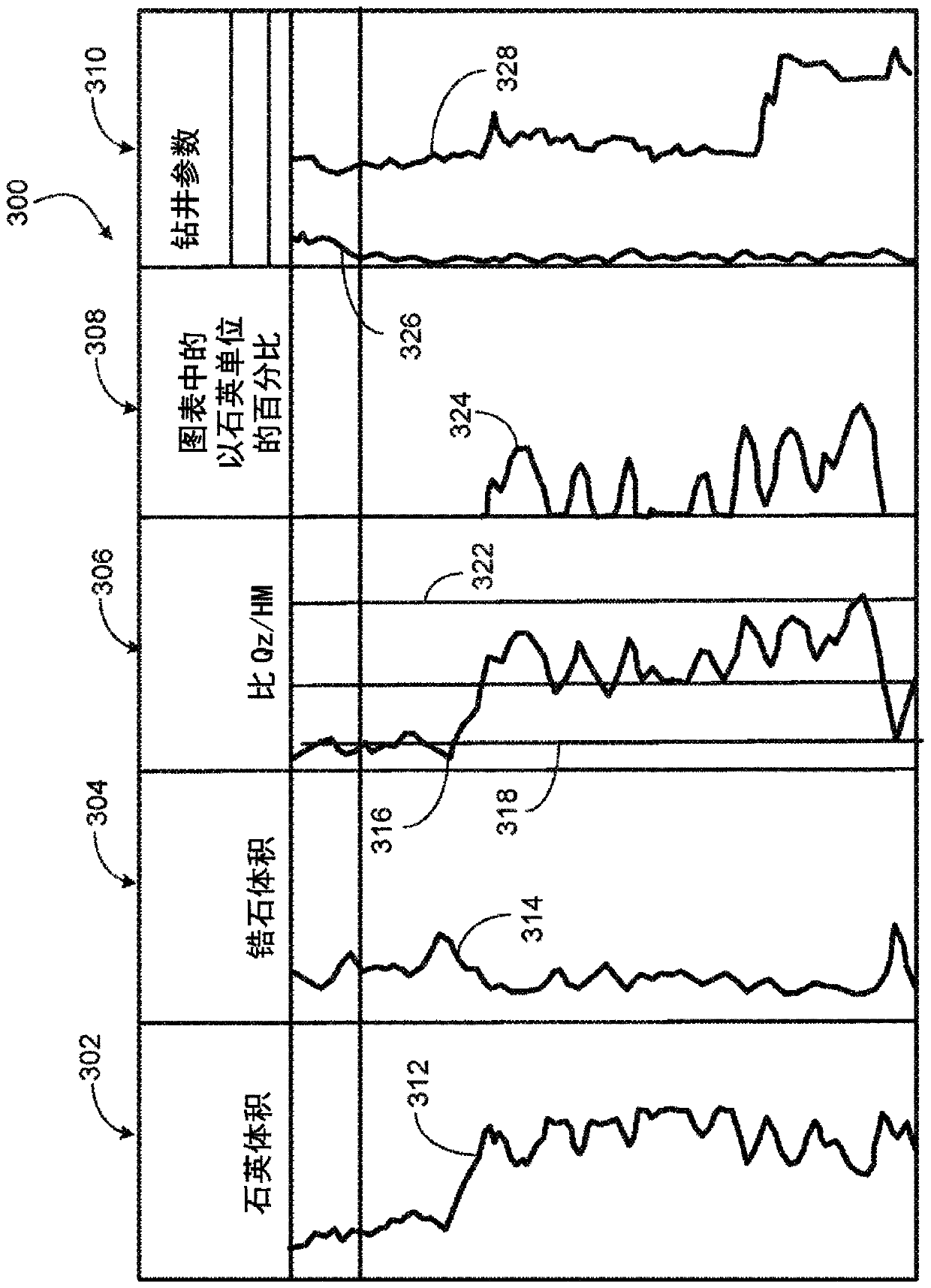Determining a rock formation content
A technology of siliceous rock and underground formations, applied in geophysical surveying, data processing applications, boreholes/well components, etc., can solve problems such as increasing the difficulty of drilling and completion operations, and achieve the effect of saving time and money
- Summary
- Abstract
- Description
- Claims
- Application Information
AI Technical Summary
Problems solved by technology
Method used
Image
Examples
Embodiment Construction
[0027] figure 1 is a schematic diagram of an example system 100 for determining the amount of silicalite in a geological formation. Generally speaking, figure 1 A portion of one embodiment of the system 100 is shown in which a logging tool, eg, logging tool 118, may generate or record logging data for determining the amount of silicalite in a particular portion of a subterranean region. In some cases, such as figure 1 As shown, the logging tool 118 is part of or coupled to a bottom hole assembly (BHA) 120 that includes a drill bit or other borehole formation tool (eg, a laser or other instrument). In this example, the generated or recorded well log data is used by the control system 122 to calculate the amount of silicalite based at least in part on data describing the amount of quartz and zircon within a particular geological formation.
[0028] In some aspects, the system 100 can be used to derive data based at least in part on well log data collected from another borehol...
PUM
 Login to View More
Login to View More Abstract
Description
Claims
Application Information
 Login to View More
Login to View More - R&D
- Intellectual Property
- Life Sciences
- Materials
- Tech Scout
- Unparalleled Data Quality
- Higher Quality Content
- 60% Fewer Hallucinations
Browse by: Latest US Patents, China's latest patents, Technical Efficacy Thesaurus, Application Domain, Technology Topic, Popular Technical Reports.
© 2025 PatSnap. All rights reserved.Legal|Privacy policy|Modern Slavery Act Transparency Statement|Sitemap|About US| Contact US: help@patsnap.com



